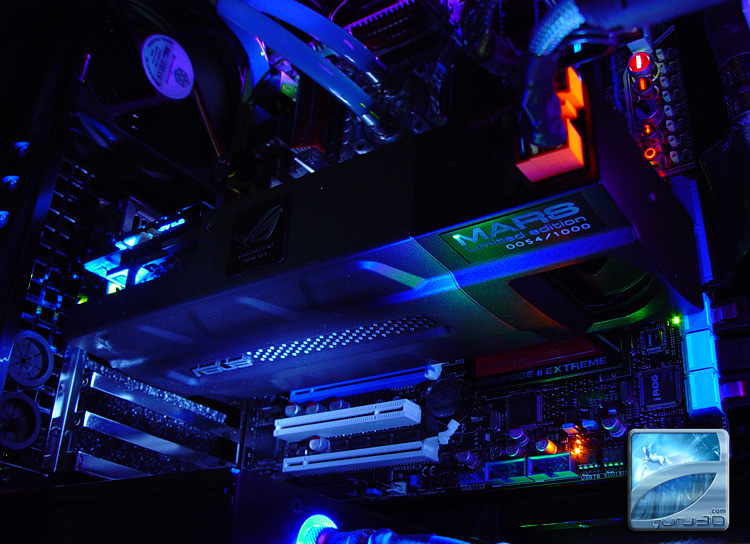Test Environment & equipment
Test Environment & equipment
Here is where we begin the benchmark portion of this article, but first let me show you our test system plus the software we used.
Mainboard
ASUS X58 ROG edition Rampage II Extreme
Processor
Core i7 965 @ 3750 MHz (3.6 + Turbo mode).
Graphics Cards
Diverse
Memory
6144 MB (3x 2048 MB) DDR3 1800 MHz OCZ @ 1500 MHz
Power Supply Unit
1200 Watt
Monitor
Dell 3007WFP - up to 2560x1600
OS related software
Windows Vista 64-bit SP2
DirectX 9/10 End User Runtime
ATI Catalyst 9.7 WHQL
NVIDIA GeForce 190.38 WHQL
Software benchmark suite
- Far Cry 2
- Fallout 3
- Call of Duty 5: World at War
- Mass Effect
- Crysis WARHEAD
- Tom Clancy's HAWX
- Anno 1404
- 3DMark Vantage
A word about "FPS"
What are we looking for in gaming performance wise? First off, obviously Guru3D tends to think that all games should be played at the best image quality (IQ) possible. There's a dilemma though, IQ often interferes with the performance of a graphics card. We measure this in FPS, the number of frames a graphics card can render per second, the higher it is the more fluently your game will display itself.
A game's frames per second (FPS) is a measured average of a series of tests. That test often is a time demo, a recorded part of the game which is a 1:1 representation of the actual game and its gameplay experience. After forcing the same image quality settings; this time-demo is then used for all graphics cards so that the actual measuring is as objective as can be.
|
Frames per second |
Gameplay |
|
<30 FPS |
very limited gameplay |
|
30-40 FPS |
average yet very playable |
|
40-60 FPS |
good gameplay |
|
>60 FPS |
best possible gameplay |
- So if a graphics card barely manages less than 30 FPS, then the game is not very playable, we want to avoid that at all cost.
- With 30 FPS up-to roughly 40 FPS you'll be very able to play the game with perhaps a tiny stutter at certain graphically intensive parts. Overall a very enjoyable experience. Match the best possible resolution to this result and you'll have the best possible rendering quality versus resolution, hey you want both of them to be as high as possible.
- When a graphics card is doing 60 FPS on average or higher then you can rest assured that the game will likely play extremely smoothly at every point in the game, turn on every possible in-game IQ setting.
- Over 100 FPS? You have either a MONSTER graphics card or a very old game.

